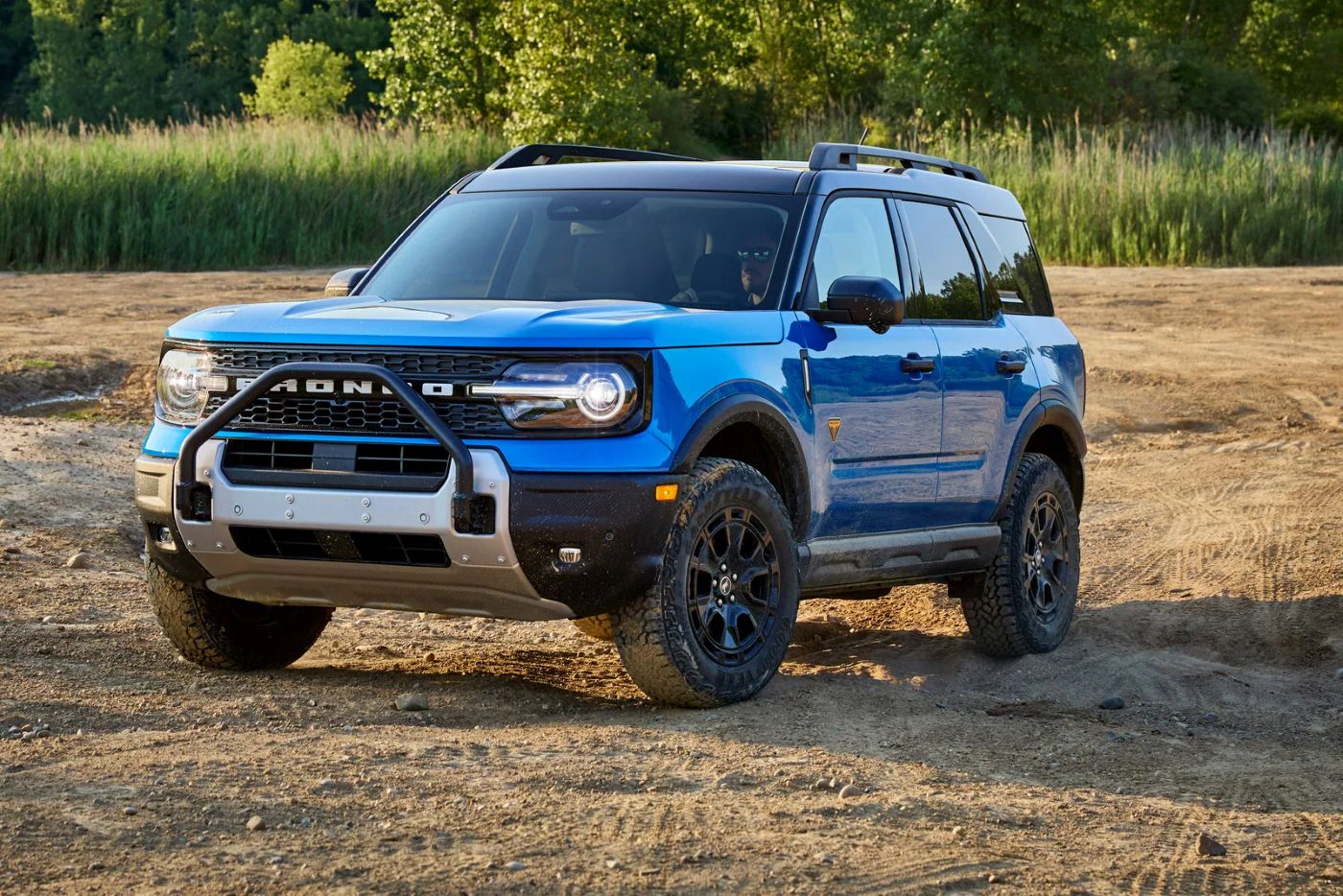Driving at high altitudes presents a unique challenge for both vehicles and drivers. As elevation increases, the air becomes thinner, meaning it contains less oxygen per cubic meter. This reduction in oxygen density directly impacts internal combustion engines, which rely on air intake to burn fuel efficiently.
With less oxygen available, many engines produce less power, often leading to reduced acceleration, sluggish throttle response, and compromised vehicle performance. This phenomenon is especially noticeable in naturally aspirated engines, which lack any form of forced induction to compensate for the thinner air.
Altitude not only affects engine output but also impacts cooling systems and transmissions. Since air density drops with altitude, there’s less cooling effect on engine components, which can lead to overheating in some models.
Additionally, automatic transmissions may hunt for gears more frequently in mountainous terrain, putting further strain on the drivetrain. For people living in or traveling through high-elevation areas, such as Denver, Colorado, Quito, Ecuador, or La Paz, Bolivia, vehicle selection can play a critical role in driving comfort, efficiency, and safety.
Fortunately, not all vehicles suffer equally in these conditions. Turbocharged and supercharged engines generally perform better at altitude due to their ability to compress air, thus mitigating the effects of reduced atmospheric pressure.
Also Read: 5 Engines That Sound Refined and 5 That Roar Like Lawnmowers
Moreover, advancements in engine control units (ECUs) and altitude-compensating fuel injection systems have helped modern cars adapt more effectively to elevation changes. Still, despite these improvements, some cars continue to struggle where oxygen is scarce.
This article delves into five vehicles that shine at high altitudes, showcasing how engineering and technology make a difference, followed by five cars that tend to underperform when driven far above sea level.
Whether you live in a mountainous region or plan on taking a road trip through elevated terrain, this guide will help you make informed decisions and understand the science behind why some cars breathe easier than others when the air gets thin.
5 Cars That Perform Well in High Altitudes

1. Subaru Outback
The Subaru Outback has long been a favorite among drivers in mountainous regions, thanks to its impressive combination of all-wheel-drive performance, ground clearance, and reliability.
Standard on every model is Subaru’s Symmetrical All-Wheel Drive system, which ensures even power distribution to all four wheels and improves traction on uneven or slippery roads often encountered at higher elevations.
Paired with 8.7 inches of ground clearance, the Outback is well-equipped to handle rocky terrain and snow-covered roads with ease. This gives drivers not only confidence but also a smoother, safer driving experience when elevation and weather conditions become unpredictable.
Under the hood, the Outback offers two engine options that cater well to high-altitude driving. The base engine is a 2.5-liter flat-four Boxer engine, which provides balanced power and stability, while the upgraded 2.4-liter turbocharged engine significantly enhances performance in thinner air.
Turbocharging helps offset the oxygen deficit found at higher elevations by forcing more air into the combustion chamber, allowing the engine to maintain horsepower and torque levels that would otherwise decline.
This is a critical advantage when climbing steep grades or passing slower vehicles on mountain roads, as it provides consistent power delivery regardless of elevation.
Moreover, Subaru’s dedication to safety and tech features enhances the Outback’s appeal for high-altitude drivers. The EyeSight Driver Assist Technology, which includes adaptive cruise control and pre-collision braking, adds a layer of security when visibility or weather takes a turn for the worse, both common in alpine driving.
Hill Descent Control and X-Mode off-road settings allow the vehicle to intelligently manage traction and braking while descending steep slopes. Combined with durable construction and an interior built for long journeys, the Subaru Outback stands out as a dependable companion for high-altitude travel.
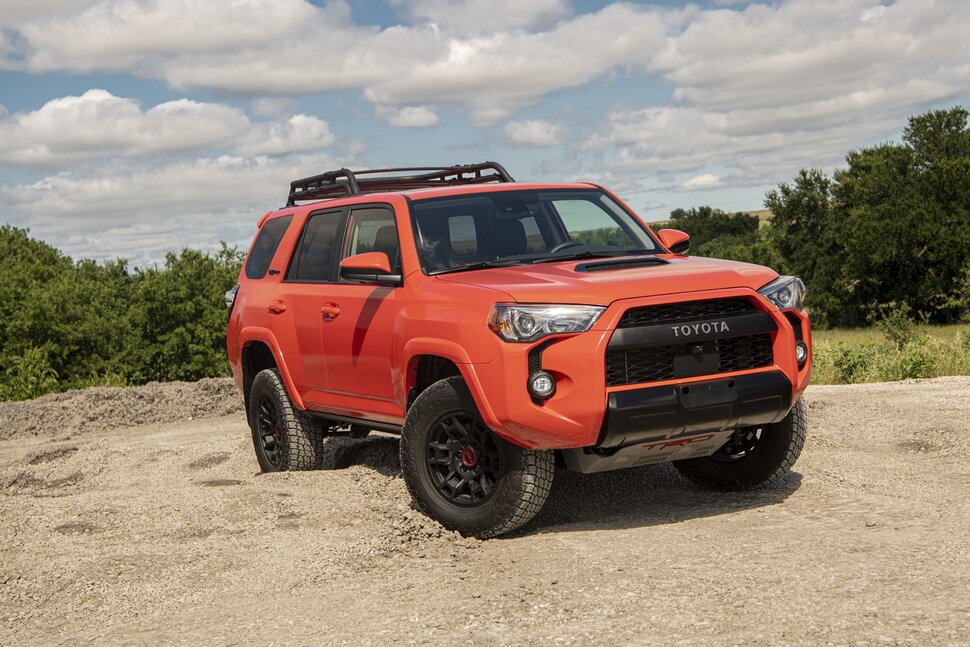
2. Toyota 4Runner
The Toyota 4Runner is a legend among off-road enthusiasts and mountain dwellers alike. Known for its body-on-frame construction and rugged build quality, the 4Runner is built to tackle harsh terrains and steep climbs with ease.
It’s powered by a 4.0-liter V6 engine that delivers robust torque, which is essential for hauling loads or powering up inclines in high-altitude areas. Although it doesn’t feature a turbocharger, the naturally aspirated engine is tuned for durability and low-end torque, which allows it to perform reasonably well despite the thinner air.
This makes the 4Runner a reliable option for long trips into elevated terrain, especially for those who prioritize strength over speed.
The 4Runner’s multi-mode 4WD system provides excellent traction on gravel roads, snow, and mud—common surfaces in mountainous environments. Drivers can switch between 2WD, 4WD high, and 4WD low settings depending on the conditions.
This adaptability is crucial when navigating unpaved trails or climbing steep, rocky roads where traction can be compromised. The available Crawl Control and Multi-Terrain Select systems allow the vehicle to manage wheel spin and throttle response independently on each axle, providing additional confidence and control on treacherous descents or uneven climbs.
What also sets the 4Runner apart is its interior functionality and capacity. It has a generous cargo area and optional third-row seating, making it ideal for families or outdoor adventurers hauling gear.
The cabin is built with durability in mind, yet still includes modern amenities like an infotainment system with Apple CarPlay and Android Auto, navigation options, and multiple charging ports.
These features may not seem crucial for elevation performance, but they contribute to a well-rounded vehicle that’s equally at home on a remote trail or parked at a ski lodge.
The Toyota 4Runner remains a strong contender for those needing a dependable, high-altitude performer that balances off-road capability with everyday utility.

3. Jeep Grand Cherokee
The Jeep Grand Cherokee strikes a balance between rugged off-road capability and refined comfort, making it a popular choice for those living at or traveling through high altitudes.
The Grand Cherokee offers a variety of engine options, including a 3.6-liter V6 and a 5.7-liter V8, but the standout for high-altitude performance is the 2.0-liter turbocharged inline-four in the plug-in hybrid 4xe variant.
This engine configuration combines electric torque with turbocharged power, allowing it to perform exceptionally well in environments where air is scarce. The electric motor mitigates performance losses due to altitude by delivering instant torque, an advantage particularly useful when climbing or accelerating in mountainous terrain.
Jeep’s available Quadra-Trac and Quadra-Drive II 4WD systems are particularly effective in ensuring maximum grip across varied surfaces, which is essential for safety and performance in mountainous conditions. With adjustable air suspension, the Grand Cherokee can increase ground clearance when navigating rocks or snow and lower itself for better fuel efficiency on highways.
It also includes Selec-Terrain drive modes, which optimize performance for snow, mud, sand, or rock. These systems allow drivers to feel confident even on narrow switchbacks or slick trails common in high-elevation landscapes.
On the inside, the Grand Cherokee elevates comfort and technology to complement its powerful drivetrain. Features like ventilated and heated seats, a panoramic sunroof, and advanced Uconnect infotainment with navigation and terrain mapping make long drives through the mountains more enjoyable.
Safety systems such as blind-spot monitoring, adaptive cruise control, and forward-collision warning provide additional peace of mind. For drivers who want the reliability of a trail-rated SUV without sacrificing luxury, the Jeep Grand Cherokee delivers both performance and comfort, ensuring it remains a top choice for high-altitude driving.
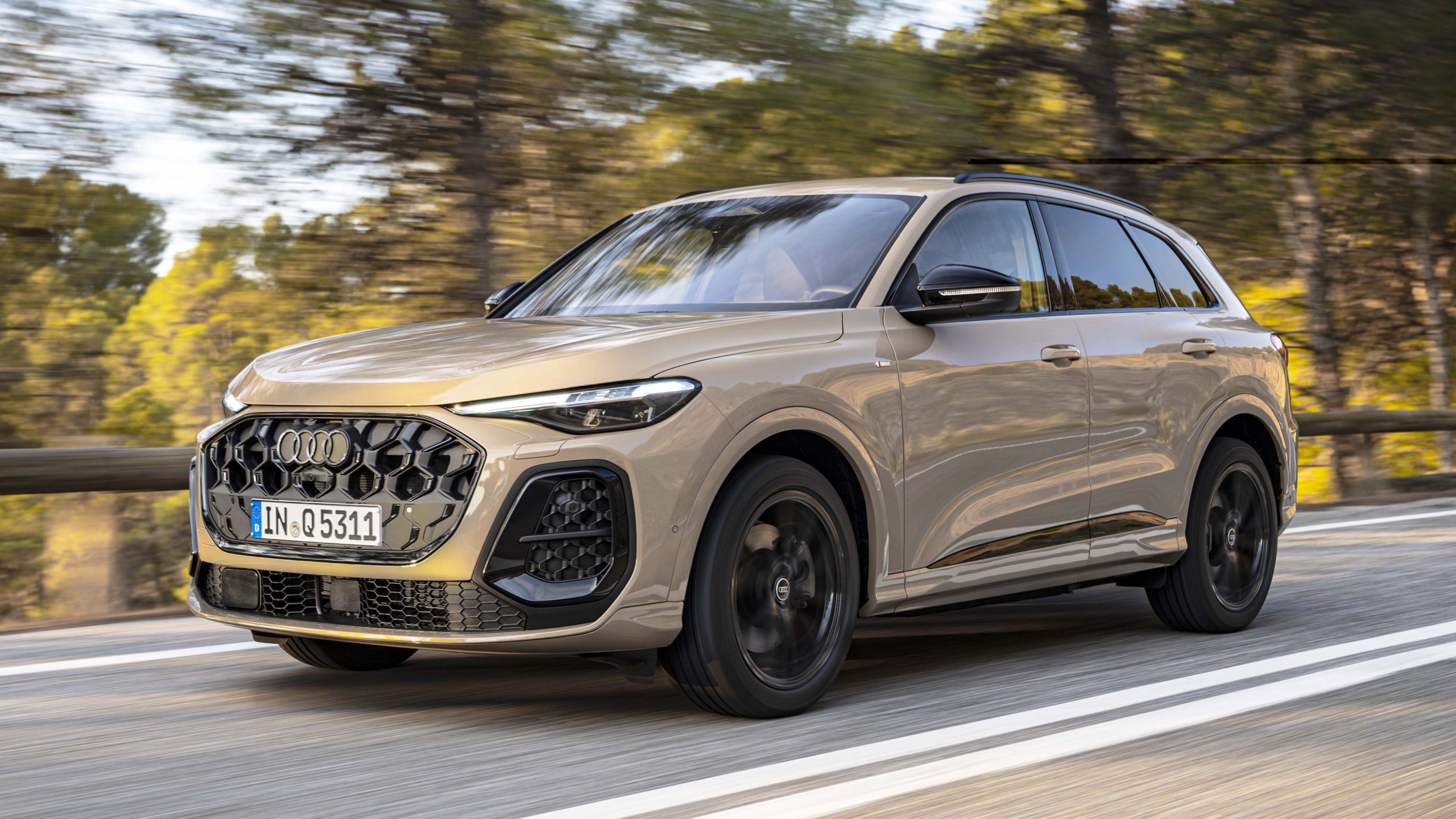
4. Audi Q5
Luxury meets performance in the Audi Q5, a premium compact SUV that handles high altitudes with surprising capability. Standard on most trims is Audi’s 2.0-liter turbocharged inline-four engine, which excels in thin-air environments thanks to its efficient turbocharging system.
This engine maintains consistent output across varying elevations, giving the Q5 a refined yet athletic driving experience in regions where other vehicles struggle. The Q5’s quattro all-wheel-drive system is another major advantage, offering excellent grip and stability on mountainous roads, particularly during snowstorms or on wet pavement.
The Q5 isn’t just about power and traction—it also brings precision handling to the table. Thanks to a finely tuned suspension system and well-weighted steering, the Q5 offers a controlled and responsive ride through winding mountain passes and steep inclines.
The available adaptive suspension adjusts the damping force in real time to improve comfort and control depending on the terrain, which is particularly beneficial for maintaining smooth handling while ascending or descending hills.
This level of driving refinement is rare in vehicles that can also perform in rough conditions, making the Q5 a unique high-altitude performer.
Inside, the Q5 delivers the luxury that one would expect from Audi. It includes a high-resolution Virtual Cockpit display, MMI touch response system, and available Bang & Olufsen audio. The cabin is insulated and comfortable, providing a serene experience during long mountain drives.
Moreover, Audi’s pre-sense safety system offers an added layer of protection with features like automatic emergency braking and lane departure warnings. For drivers who value a premium driving experience without compromising high-altitude performance, the Audi Q5 offers the best of both worlds in a sleek, efficient package.
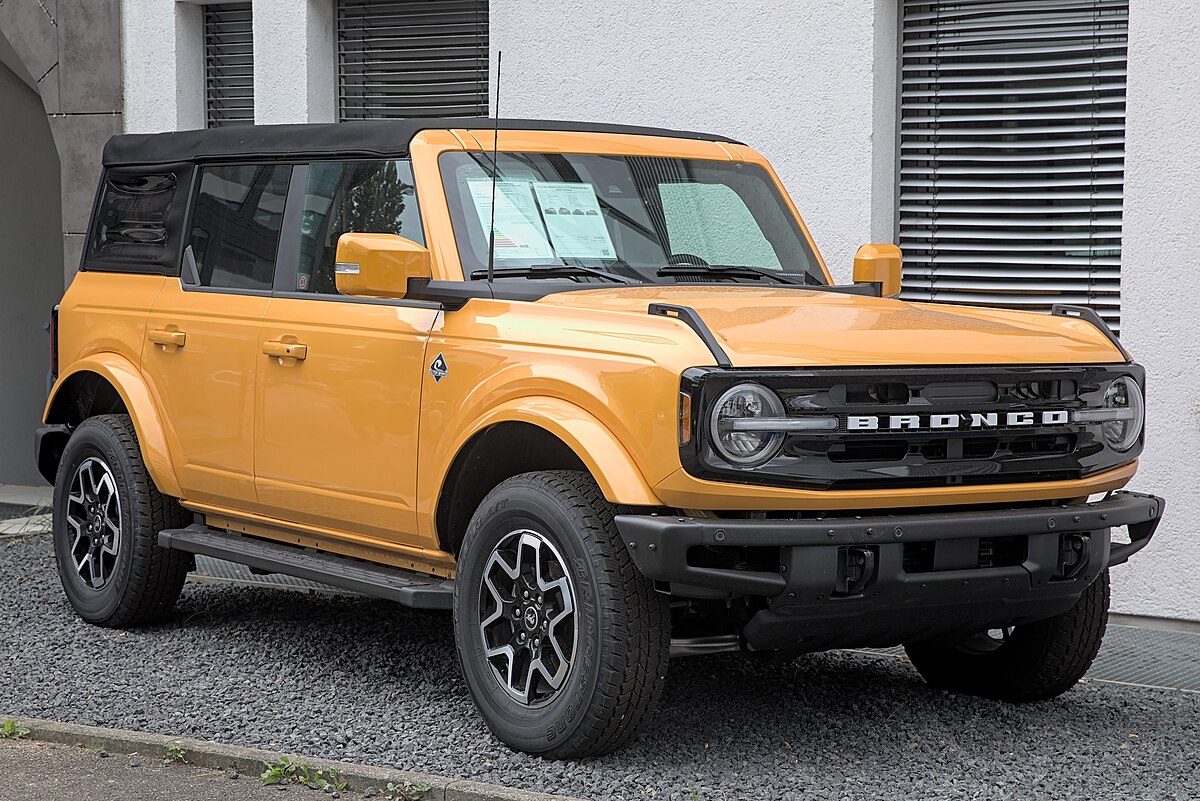
5. Ford Bronco
The Ford Bronco has re-emerged as a favorite among adventurers and high-altitude drivers alike. Built to rival the Jeep Wrangler, the Bronco offers impressive high-altitude performance thanks to its turbocharged EcoBoost engine options and off-road-focused engineering.
The 2.3-liter four-cylinder and 2.7-liter V6 EcoBoost engines both feature turbocharging, helping the Bronco maintain power even when oxygen levels drop. This ensures strong torque and responsiveness when tackling elevation gains or pulling through rocky, off-camber trails common in mountainous terrain.
Ford has engineered the Bronco with serious off-road credentials. It includes advanced 4×4 systems, including an available electromechanical transfer case that allows seamless shifting between drive modes.
The G.O.A.T. (Goes Over Any Terrain) Modes allow the Bronco to adjust throttle response, gearing, and traction control to optimize performance on sand, snow, rocks, or mud.
High ground clearance, durable skid plates, and water fording capability make it especially suitable for backcountry trails at elevation. These features come in handy when venturing into remote regions where conditions can change rapidly and unpredictably.
Beyond its mechanical prowess, the Bronco also offers a user-friendly and adventure-ready interior. With washable rubberized flooring, marine-grade vinyl seating, and removable doors and roof, it’s designed for outdoor use without sacrificing comfort.
Tech features like trail navigation, a front-facing camera for off-road spotting, and a digital instrument panel provide utility and peace of mind during extended mountain excursions. Whether you’re camping above the treeline or exploring old mining roads, the Bronco delivers powerful, confident driving in the most challenging high-altitude scenarios.
5 Cars That Struggle to Breathe in High Altitudes

1. Honda CR-V (Naturally Aspirated Versions)
The Honda CR-V has long been one of America’s best-selling compact SUVs, but earlier models with naturally aspirated engines do not fare well at high elevations.
Before Honda added the 1.5-liter turbocharged engine in newer trims, the CR-V relied on a naturally aspirated 2.4-liter four-cylinder engine that showed a noticeable loss of power when driven above 5,000 feet. Acceleration becomes sluggish, and the engine feels labored, especially when climbing steep grades.
One of the major reasons the naturally aspirated CR-V struggles in thinner air is the lack of forced induction. Without a turbo or supercharger to compress incoming air, the engine simply doesn’t receive the oxygen it needs for optimal combustion.
This results in a 15–20% drop in horsepower at higher elevations, which becomes even more apparent when carrying passengers or cargo. For residents in mountainous regions, the performance deficit is not just inconvenient—it can also be a safety concern during overtakes or steep descents.
To its credit, the CR-V remains a reliable and fuel-efficient vehicle in most other conditions. However, drivers in cities like Denver or Albuquerque often opt for turbocharged models or all-wheel-drive alternatives from other manufacturers to counteract the naturally aspirated CR-V’s shortcomings.
Those with older models may find that they have to manually downshift on hills or avoid mountain routes altogether during heavy travel periods.
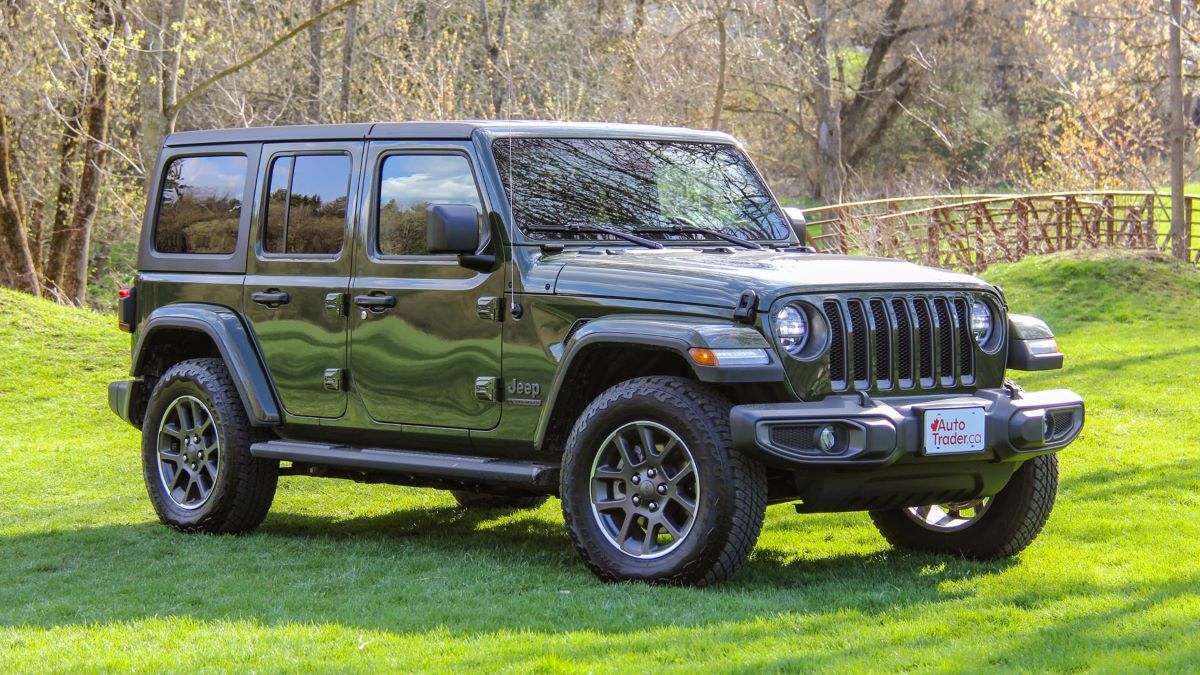
2. Jeep Wrangler (3.6L Pentastar V6)
The Jeep Wrangler is iconic for off-roading and rugged adventures, but it doesn’t always perform well in high-altitude conditions, particularly models powered by the 3.6-liter Pentastar V6. While the engine offers decent torque at sea level, its performance suffers in elevation due to the absence of forced induction.
The engine’s naturally aspirated design results in noticeable power loss above 6,000 feet, which can be frustrating for drivers tackling steep, rocky trails or trying to merge onto highways in mountainous regions.
Although the Wrangler excels in maneuverability and trail features like low-range gearing and solid axles, its high-altitude driving experience often includes frequent downshifting, louder engine noise, and sluggish response.
This becomes more evident when carrying extra gear or towing a trailer, both of which are common scenarios for Jeep owners heading into the backcountry.
Even with the Rubicon’s off-road credentials, the engine’s underperformance in thin air limits its full potential when climbing high passes or navigating remote alpine routes.
To address this, Jeep has introduced newer engine options like the 2.0-liter turbocharged four-cylinder and the plug-in hybrid 4xe, both of which are better suited to high-altitude environments.
However, for many owners still driving older or base-model Wranglers, the lack of turbocharging continues to be a drawback in mountainous regions. This doesn’t make the Wrangler unusable at elevation, but it does mean extra planning and patience are often required.
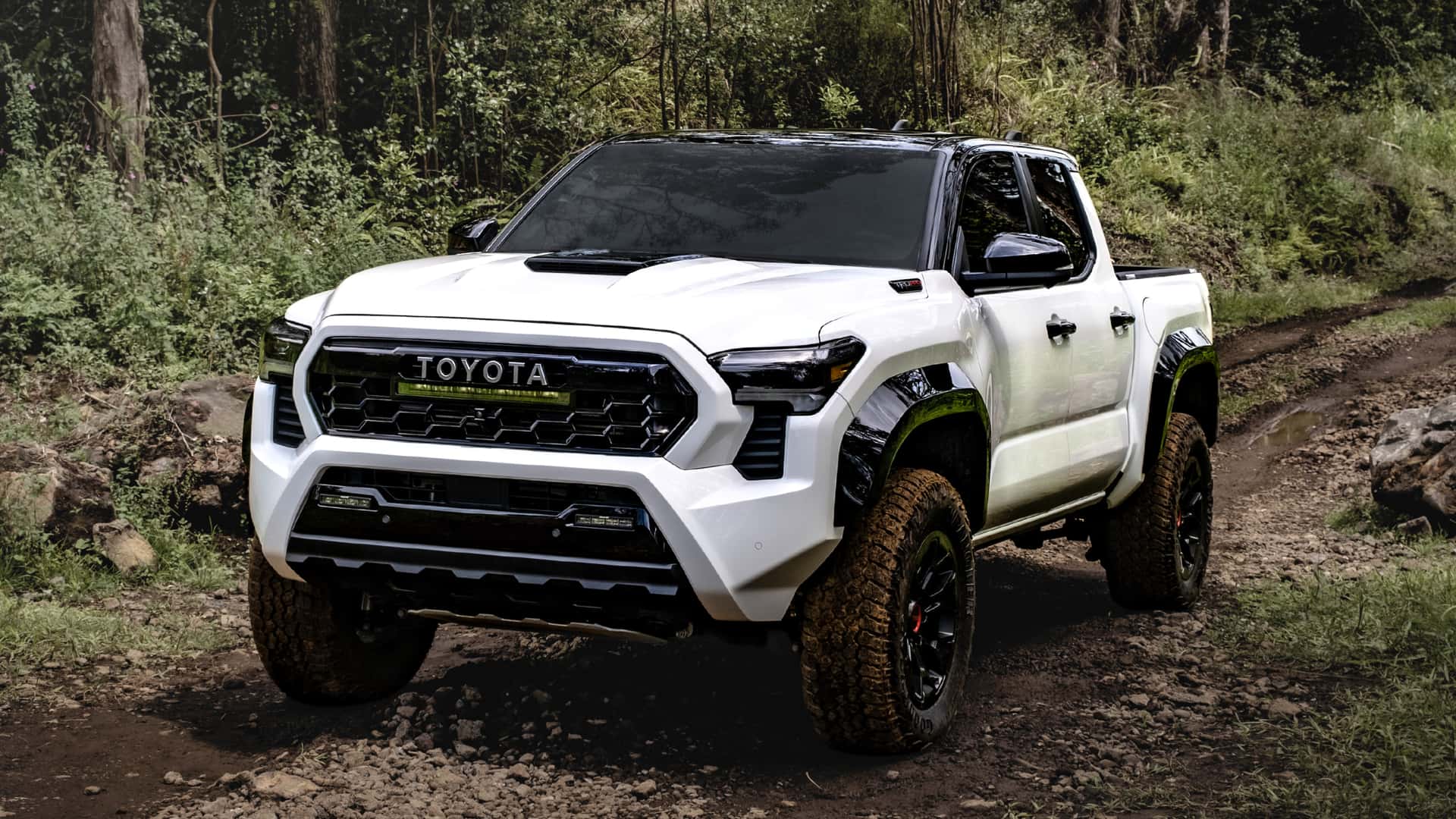
3. Toyota Tacoma (3.5L V6)
The Toyota Tacoma is a mid-size pickup truck revered for its dependability and off-road prowess, especially in regions with rugged terrain. However, despite its popularity, the 3.5-liter V6 engine found in most modern Tacomas struggles in high-altitude environments.
This naturally aspirated powerplant experiences noticeable performance losses at elevation, primarily due to its lack of a turbocharger or supercharger to offset the reduced oxygen levels.
Drivers who take their Tacomas into high-elevation areas frequently report sluggish acceleration and labored climbing, particularly when towing or hauling gear.
While the engine produces respectable power at sea level, the combination of elevation and the truck’s weight becomes a liability in mountainous conditions.
This issue is amplified when driving on steep switchbacks or long inclines, where the engine must work harder to maintain momentum, often resulting in increased fuel consumption and engine noise.
The issue isn’t solely with the engine; the Tacoma’s 6-speed automatic transmission also tends to hunt for gears when under strain at altitude. Although the truck’s off-road trims like the TRD Off-Road and TRD Pro include crawl control and other aids, these don’t compensate for the power loss experienced at higher elevations.
As a result, while the Tacoma remains reliable and capable, it’s not the most efficient or enjoyable vehicle to drive in places like the Rockies or Sierra Nevadas—at least not without modifications like forced induction aftermarket kits.
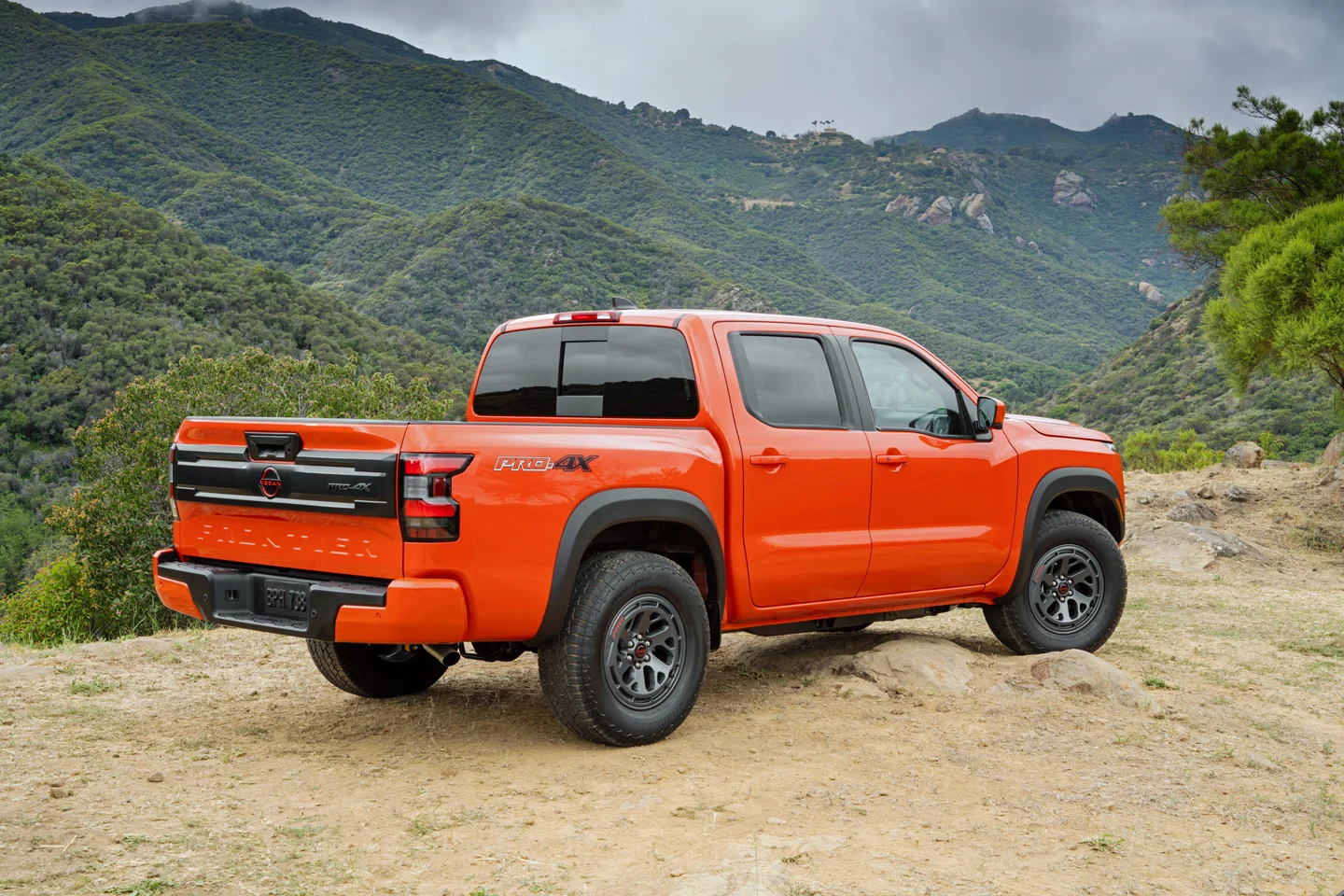
4. Nissan Frontier (Older Models with 4.0L V6)
The older generations of the Nissan Frontier, especially those powered by the 4.0-liter V6 engine used between 2005 and 2021, tend to struggle at higher elevations.
Although the engine is known for its durability and torque, it is naturally aspirated and exhibits a notable drop in power above 5,000 feet. This makes uphill driving less responsive, and the engine can feel sluggish, especially when fully loaded.
Much like other trucks in this category, the Frontier’s weight, combined with its lack of forced induction, makes climbing steep grades difficult. It’s particularly problematic when merging onto highways in mountainous terrain or when traversing long ascents on gravel or dirt roads.
The throttle often needs to be pushed harder to maintain speed, which in turn reduces fuel economy and increases engine wear over time.
To its credit, the Frontier is a no-nonsense workhorse that can handle a lot of abuse. However, high-altitude areas like the Colorado Rockies, the Andean highlands, or the Sierra Madre ranges expose their design limitations.
Newer versions of the Frontier feature more modern engines and tuning, but for those driving older models, especially with a manual transmission, high-altitude driving can be a test of patience and mechanical sympathy.
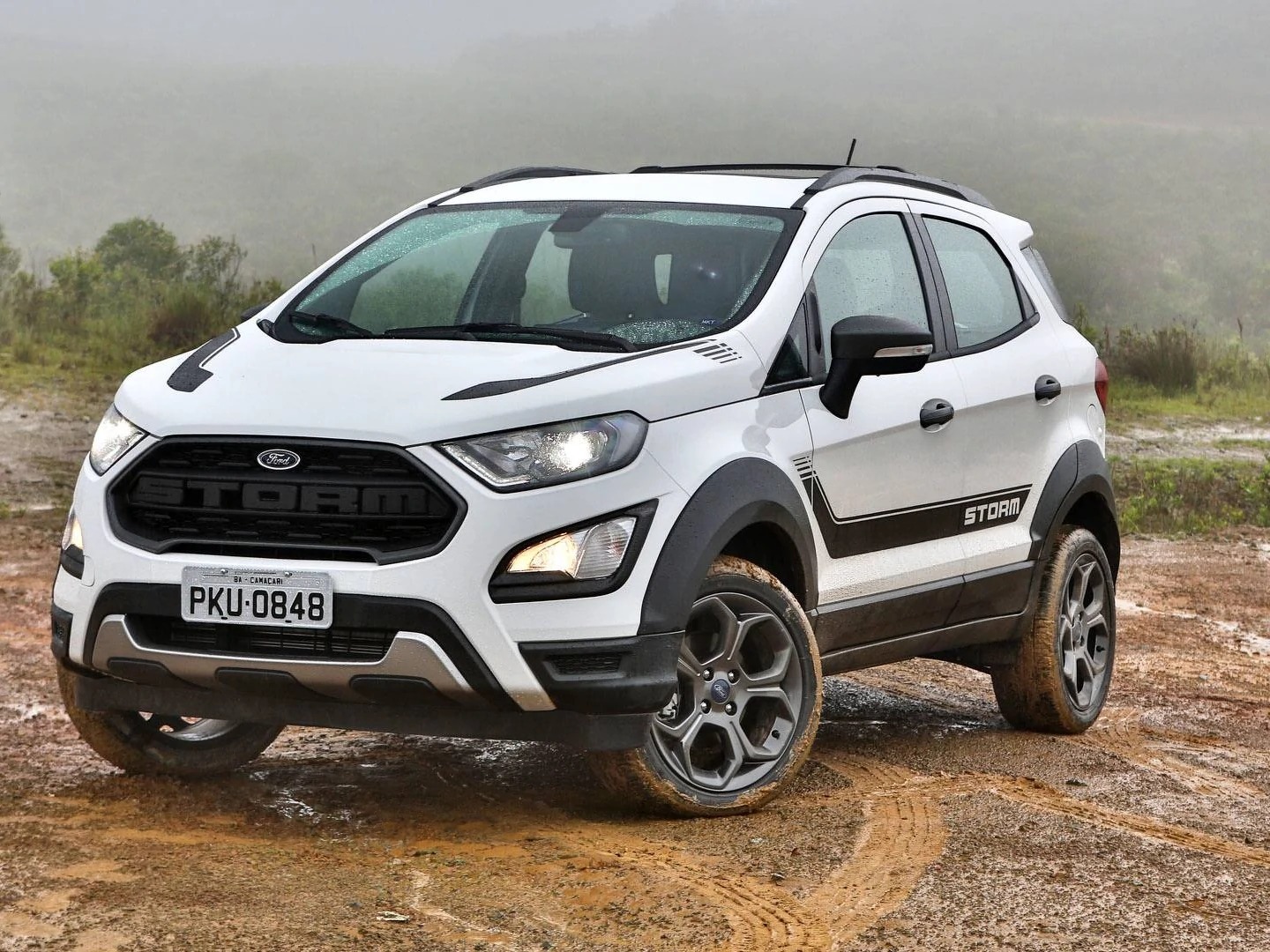
5. Ford EcoSport (1.0L EcoBoost)
At first glance, the Ford EcoSport might seem like a smart urban crossover, but its performance at high elevations reveals significant drawbacks. While it does feature a turbocharged 1.0-liter EcoBoost engine, the power output is modest even under optimal conditions.
At higher altitudes, the already low baseline horsepower and torque figures become further diminished, leading to underwhelming acceleration and throttle response.
Despite having a turbo, the EcoSport’s engine struggles to deliver consistent performance above 6,000 feet. This is partially due to its small displacement, which means the engine has less inherent torque to begin with.
When the thin air hits, the tiny turbo has to work overtime to maintain pressure, often resulting in excessive lag or strain. As a result, passing slower vehicles or climbing steep roads becomes a challenge that tests the patience of drivers and passengers alike.
The EcoSport was designed primarily for urban and suburban settings, not mountainous terrain. While its compact size and high seating position are appreciated in tight areas, these benefits do little to offset its lack of power in places like Salt Lake City or Flagstaff.
Those living or traveling in high-altitude areas would be better served by a more robust crossover with a larger turbocharged engine or a naturally aspirated engine tuned for torque at lower RPMs.
Driving at high altitudes exposes a critical truth about vehicle performance: not all cars are created equal when oxygen becomes scarce. While many drivers never notice a difference at sea level, those who live in or travel through mountainous regions must consider how their vehicles adapt to thinner air.
Power loss, gear hunting, overheating, and poor fuel economy can quickly turn a scenic drive into a frustrating ordeal when the wrong car is chosen for the terrain.
Turbocharged vehicles, such as the Subaru Outback XT, Audi Q5, and even the more rugged Toyota 4Runner, demonstrate how thoughtful engineering can help offset altitude-related performance dips.
These vehicles excel not just because of their engines but also due to well-integrated traction systems, cooling technologies, and intelligent electronics that help them adapt dynamically to changing environments. They maintain their drivability and safety, making them excellent choices for those who frequent high mountain passes or live at elevation year-round.
Also Read: 10 V8 Engines That Keep Running Strong Even After 300,000 Miles of Real-World Abuse
On the other hand, cars like the Honda CR-V (non-turbo), Jeep Wrangler (V6), and Ford EcoSport highlight the limitations of older powertrains and small engines in elevated conditions. While perfectly adequate in flat or urban regions, these vehicles struggle when the road climbs and the air thins.
Naturally aspirated engines, in particular, suffer from the lack of oxygen, and without technological compensation like turbocharging or optimized engine mapping, their performance can fall off dramatically.
Drivers should assess their environment and needs carefully when selecting a vehicle. If high-altitude travel is a regular part of life—whether for work, play, or daily commuting—choosing a car that thrives in these conditions isn’t just about convenience. It’s about safety, efficiency, and ensuring that your vehicle can breathe as easily as you do, no matter how high the road takes you.

